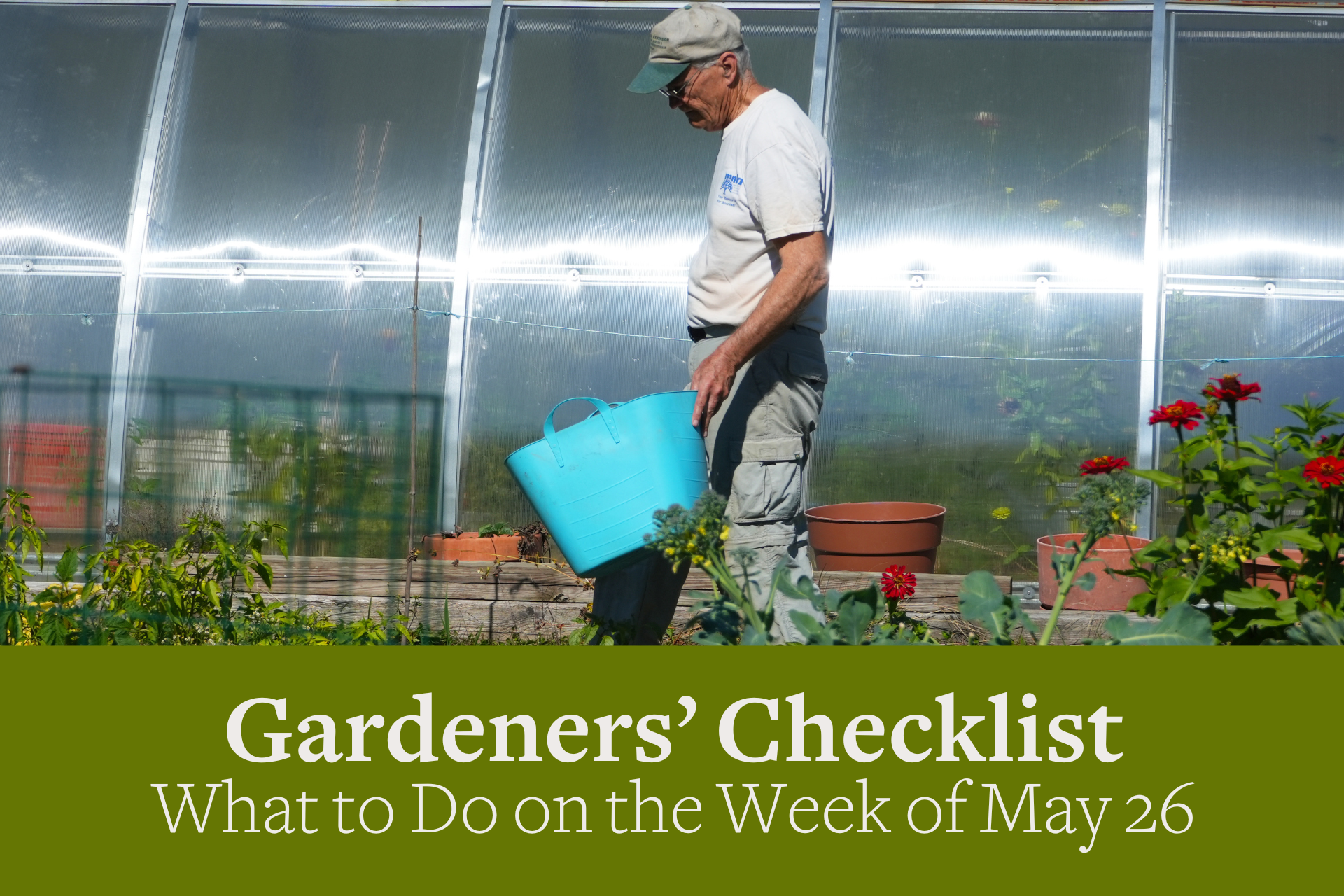You are here
Gardeners Checklist: Here Is What to Do on the Week of May 26
Gardeners Checklist: Here Is What to Do on the Week of May 26
By Ron Kujawski
* Hill up potatoes. This is done using a hoe or garden rake to pull soil up and around the potato plants, exposing only the top three or four inches of each plant. As an alternative to hilling, place a layer of straw at least six inches deep around the plants. Additional straw will have to be added as the initial layer settles.
* Transplant tomato, pepper, and eggplant seedlings to the garden. Plant these three crops, as well as cucumbers and squash, in an area of the garden where they have not been grown within at least the past two years. Rotating planting areas in this way can help prevent diseases such as Phytophthora blight, a serious and increasingly common disease of these particular crops.
* Create a weed-free seed bed somewhere in your garden for the purpose of starting biennials and perennials. Sowing seeds of these now will result in mature plants ready to transplant to flower gardens in September.
* Apply a three-inch deep layer of mulch such as pine needles, composted wood chips, shredded leaves, or bark nuggets around azaleas, laurels, and rhododendrons in shrub borders, and around blueberry plants. All of these are shallow-rooted, and the mulch will keep soils moist and cool during the summer. Another benefit of the mulch is weed control. Mulch should eliminate the need for cultivating or hoeing out weeds, which can be damaging to the shallow roots. Just be careful not to pile any mulch against the stem of each plant. Leave a space of one or two inches between the mulch and the plant stem.
* Use a combination of trailing plants for hanging baskets. Calibrachoa (million bells), trailing verbena, bacopa, brachycome, lantana, lobelia, and scaevola are easy-care choices.
* Sow seeds of pole beans, even if you’ve planted some bush beans. Generally, pole beans mature later than bush beans and will continue to provide beans long after bush beans have stopped producing. Pole beans will need a trellis or poles at least six feet high as support.
*
Speaking of beans, dry beans have been a staple food for many cultures for thousands of years. I don’t know if early civilizations appreciated the nutritional benefits of eating beans or if they simply liked amusing themselves with the musical consequences of eating beans. Dry beans are one of the most nutrition-rich vegetables. They are high in protein (22-24 percent of a dry bean is protein), dietary fiber, complex carbohydrates, and iron. Perhaps that’s why I see so many recipes for dry beans appearing in food and nutrition publications. Dry beans are very easy to grow if you have the garden space. A space-saving technique is wide row planting, where two rows are planted just 6 inches apart. While any variety of bean can be left in the garden until the plants and seed pods have dried, we grow classic dry bean varieties, including Great Northern, red kidney, and black turtle. One of the advantages of growing heirloom dry bean varieties is that some seeds can be saved from each year’s harvest for planting the next year’s crop.
Ron Kujawski began gardening at an early age on his family's onion farm in upstate New York. Although now retired, he spent most of his career teaching at the UMass Extension Service. He serves on Berkshire Botanical Garden’s Horticulture Advisory Committee. His book, Week-by-Week Vegetable Gardener’s Handbook, is available here.
Help Our Garden Grow!
Your donation helps us to educate and inspire visitors of all ages on the art and science of gardening and the preservation of our environment.
All donations are 100 percent tax deductible.


